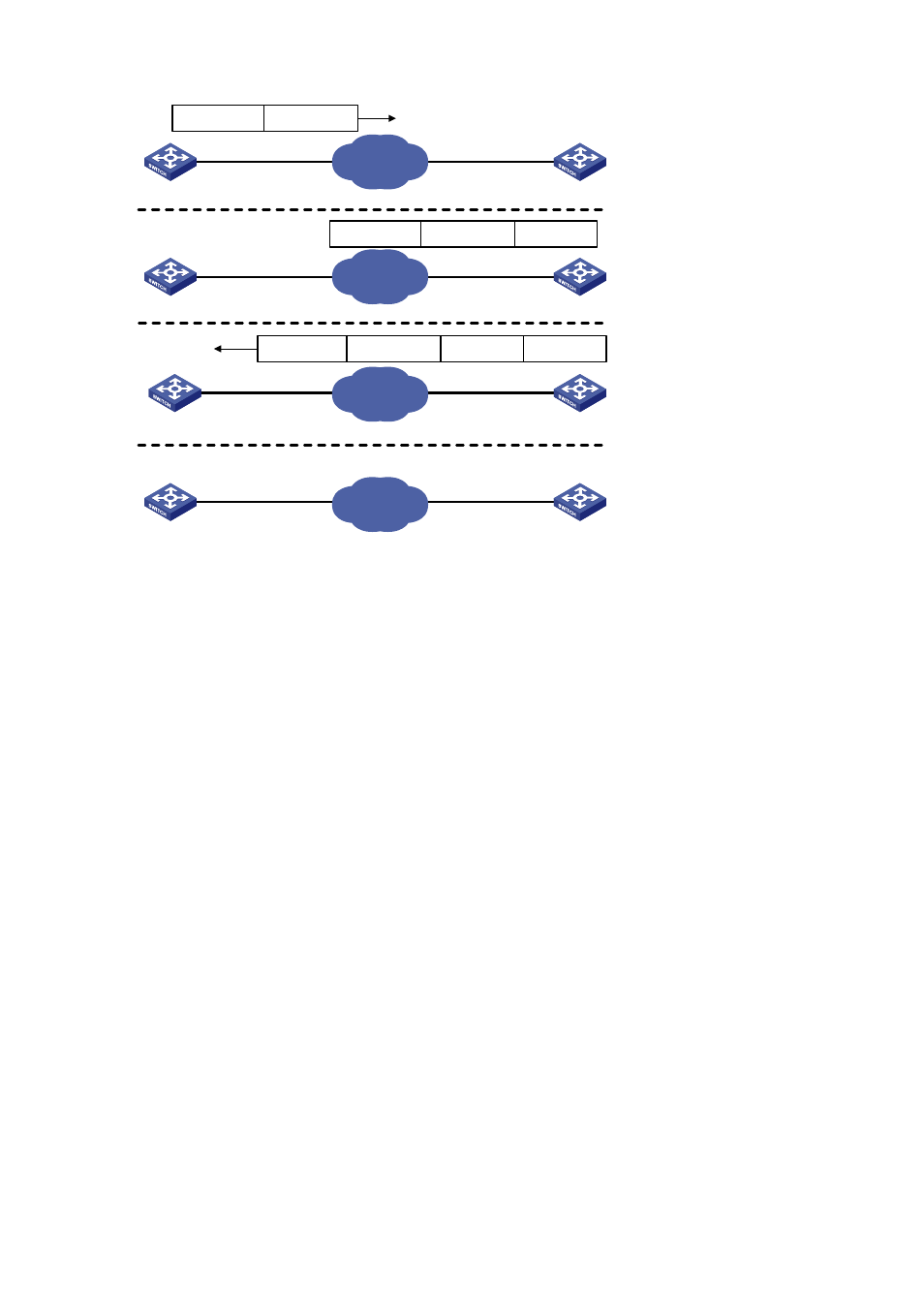Ntp implementation modes, Figure 1-1 – H3C Technologies H3C S3600 Series Switches User Manual
Page 870

1-3
Figure 1-1 Implementation principle of NTP
IP network
IP network
IP network
IP network
Device B
Device A
Device B
Device A
Device B
Device A
Device B
Device A
10:00:00 am
11:00:01 am
10:00:00 am
NTP message
10:00:00 am
11:00:01 am
11:00:02 am
NTP message
NTP message
NTP message received at 10:00:03 am
1.
3.
2.
4.
The procedure of synchronizing the system clock is as follows:
z
Device A sends an NTP message to Device B, with a timestamp 10:00:00 am (T
1
) identifying when
it is sent.
z
When the message arrives at Device B, Device B inserts its own timestamp 11:00:01 am (T
2
) into
the packet.
z
When the NTP message leaves Device B, Device B inserts its own timestamp 11:00:02 am (T
3
)
into the packet.
z
When Device A receives the NTP message, the local time of Device A is 10:00:03am (T4).
At this time, Device A has enough information to calculate the following two parameters:
z
Delay for an NTP message to make a round trip between Device A and Device B:
Delay = (T
4
-T
1
)-(T
3
-T
2
).
z
Time offset of Device A relative to Device B:
Offset = ((T
2
-T
1
) + (T
3
-T
4
))/2.
Device A can then set its own clock according to the above information to synchronize its clock to that of
Device B.
For detailed information, refer to RFC 1305.
NTP Implementation Modes
According to the network structure and the position of the local Ethernet switch in the network, the local
Ethernet switch can work in multiple NTP modes to synchronize the clock.
